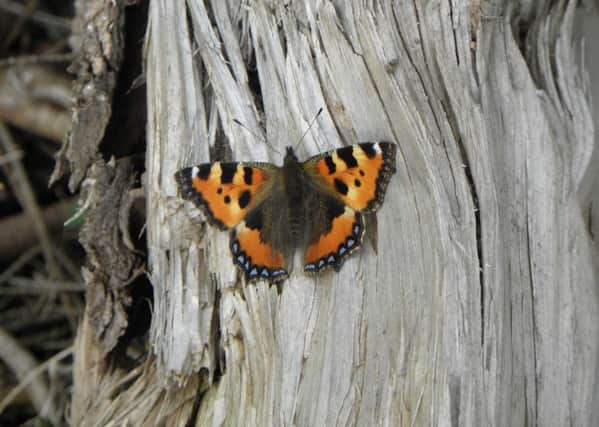Following the Leader just gets better and better


They are now all Red Admirals, the other species having now given up.
A favourite autumnal walk of mine is along the banks of the Leader, along either the Jubilee Path or the Leader Walk, both starting at Leaderfoot, but following opposite sides of the river.
Advertisement
Hide AdAdvertisement
Hide AdIf you feel energetic, you can go all the way to Earlston and return by the opposite path – a distance of about six miles, or you can shorten it by crossing the river by the footbridge at Cowdenknowes. Both routes are well maintained by the Earlston Paths Group and well worth a visit.
Last week I only did a part of the walk, but it was as lovely as ever. Since my last visit, a large area of coniferous woodland has been felled, but thankfully, if anything, it has opened up the pathway to allow more light in, thus increasing the natural biodiversity.
It was here that I paused to photograph a late small tortoiseshell butterfly, resting on a piece of wood – probably the last one I will see this year.
Birds noted in this area were noisy jays feeding on acorns and on the water were heron, dipper and mallard.
Advertisement
Hide AdAdvertisement
Hide AdSunday was my monthly wildfowl count day, when I visit three local lochs to record all the water birds present. So far, the whooper swans have not yet put in an appearance, but they will arrive any time now.
The mutes are still with their brown youngsters, some having had more successful breeding years than others.
At Whitmuir only one cygnet still survives, while at Lindean Reservoir, the proud parents still have five offspring in tow.
At the smallest of the lochs, I recorded a group of nine wigeon for the first time this season.
Advertisement
Hide AdAdvertisement
Hide AdThe wigeon is a medium-sized duck with a round head and small bill. The head and neck of the male are chestnut, with a yellow forehead, pink breast and grey body.
In-flight birds show white bellies and males have a large white wing patch. Many birds visit the UK in winter from Iceland, Scandinavia and Russia and are unusual in the duck world in that they whistle rather than quack.
Another dabbling duck proved to be the most numerous of the day. No, it wasn’t the mallard as expected, but the diminutive teal – our smallest native duck – only noted at one location, but almost 50 individuals were recorded.
Thank you to all those who have been in touch by e-mail during the past week. If you have a wildlife query that you think I may help you with or an unusual photo you would like to share with our readers, contact me at [email protected]